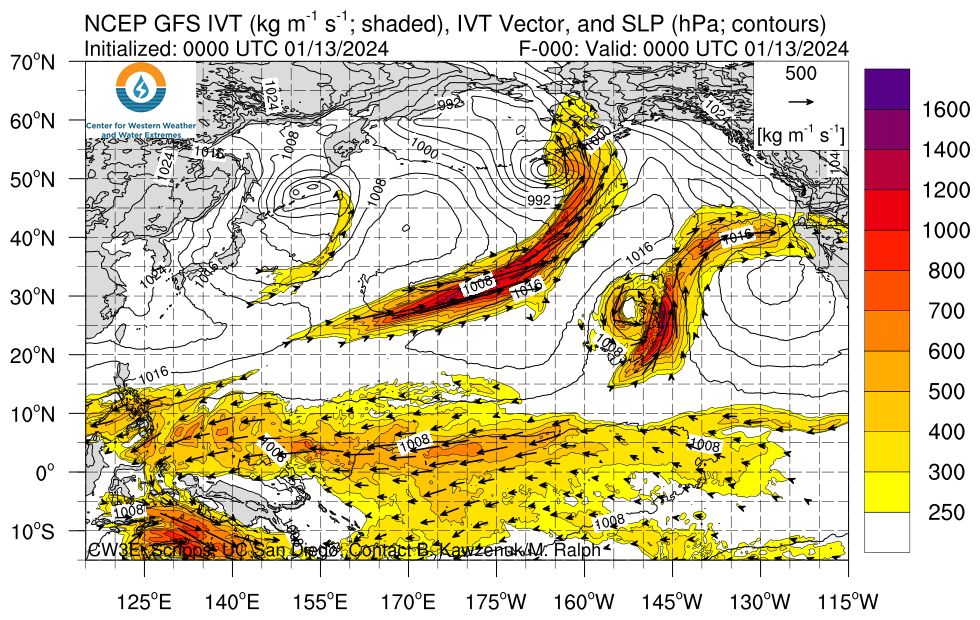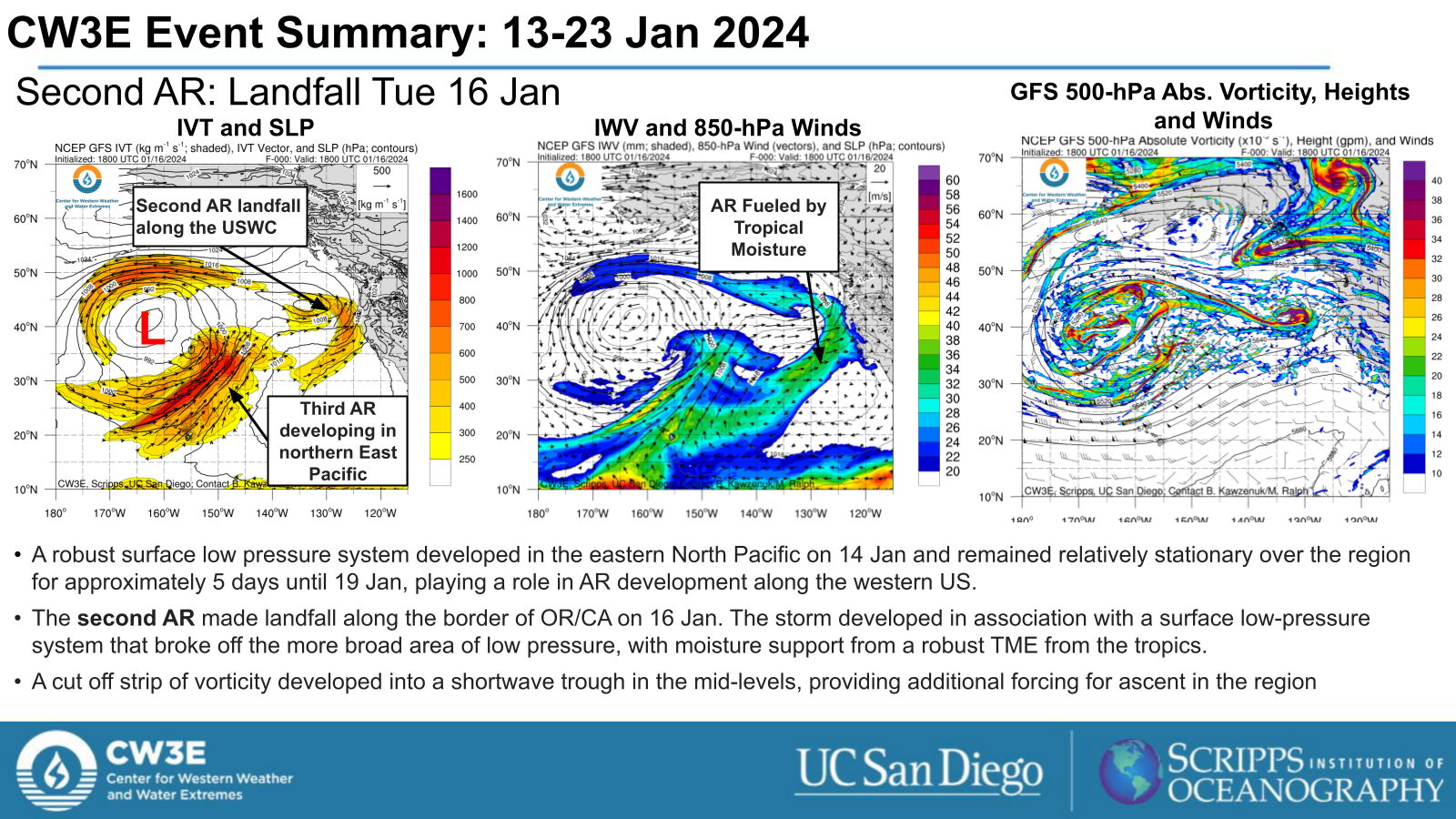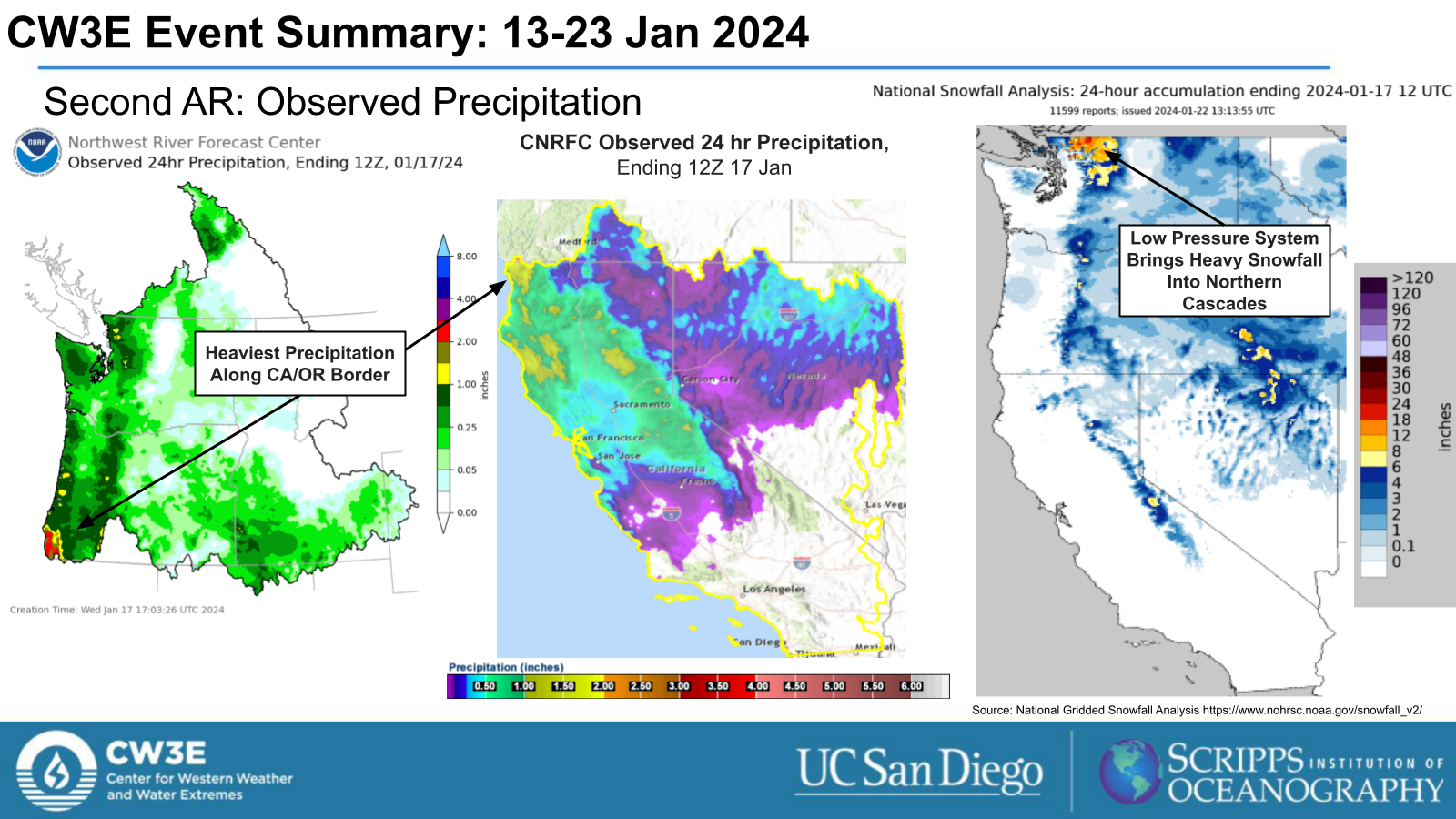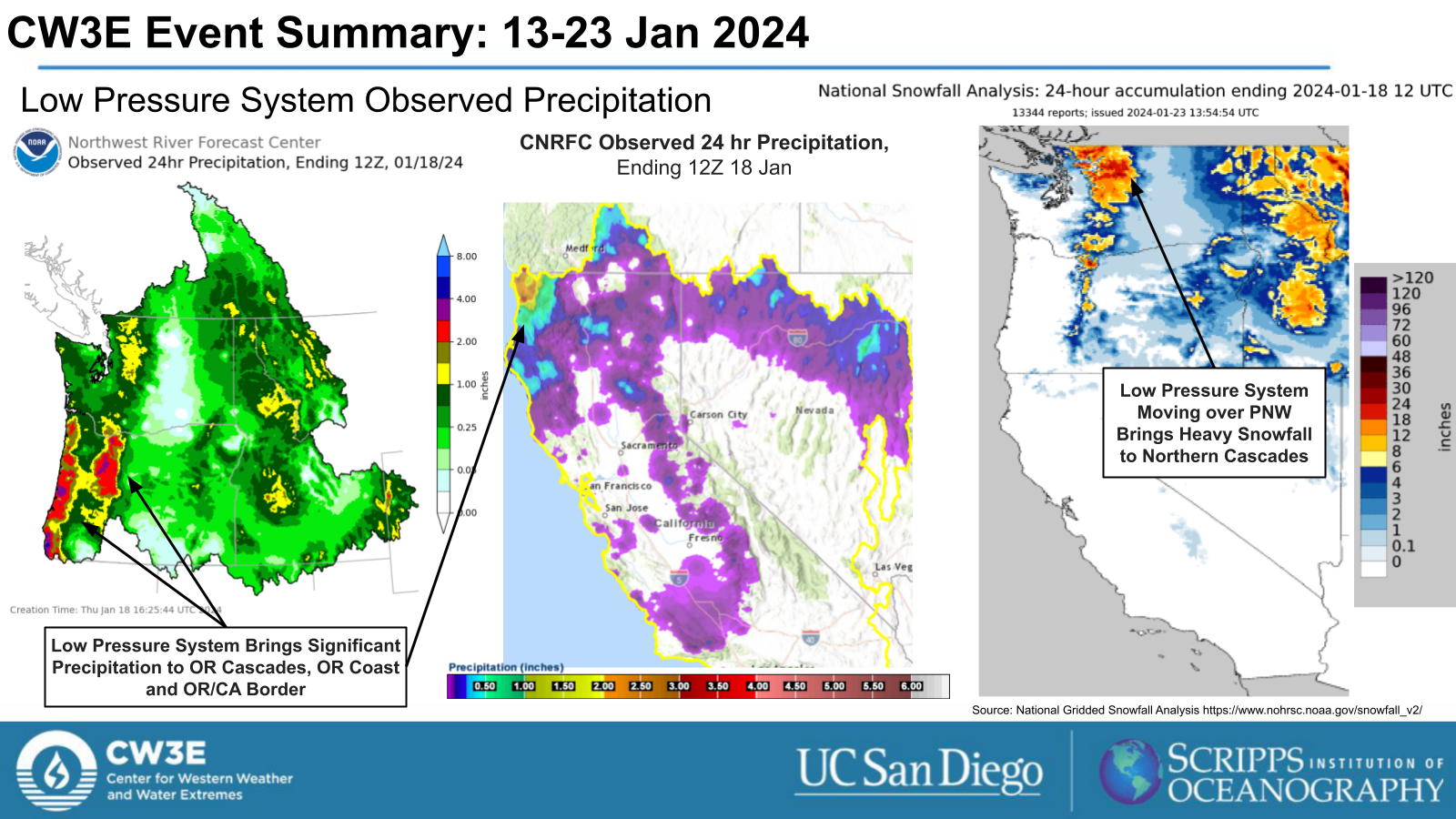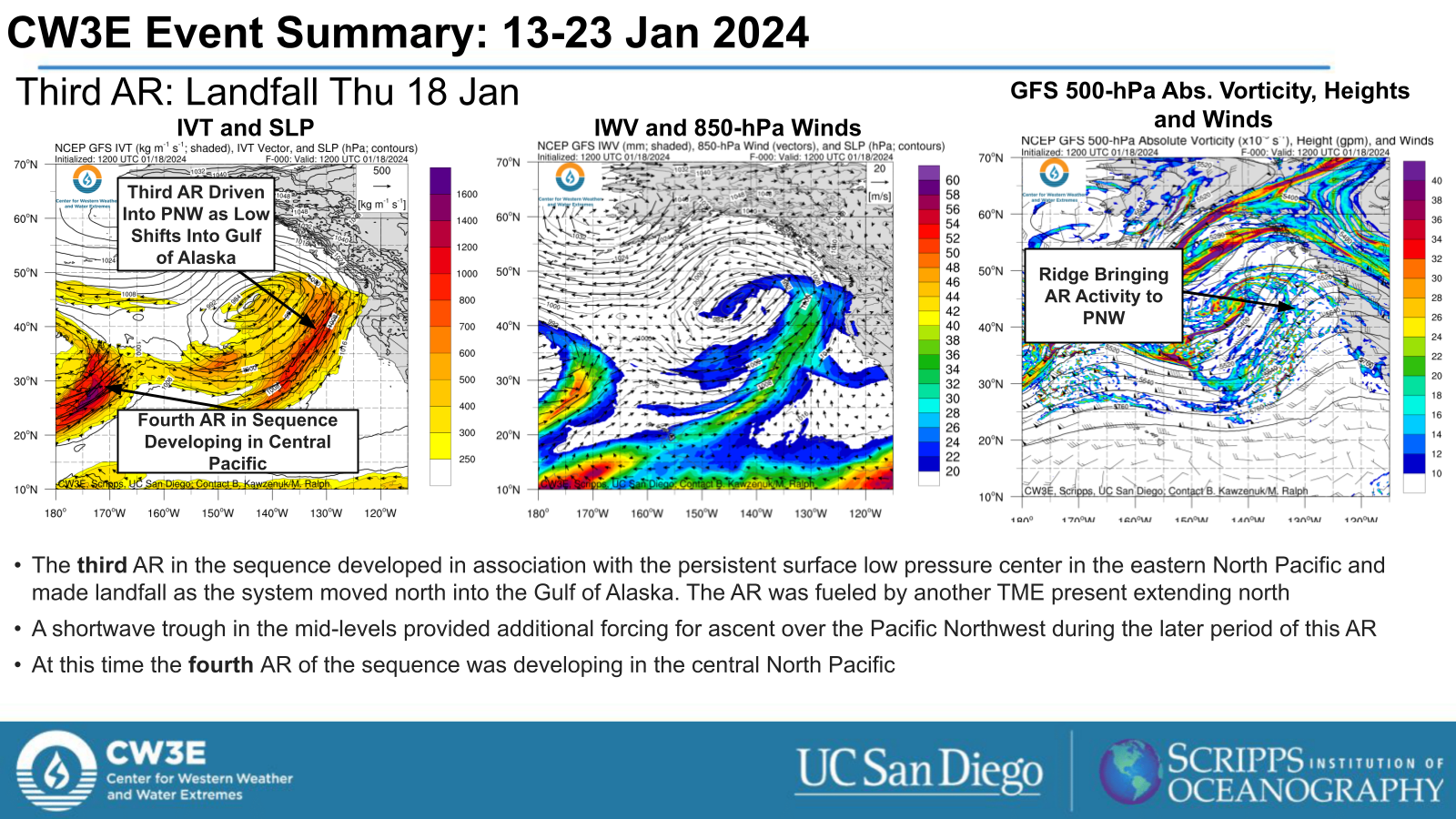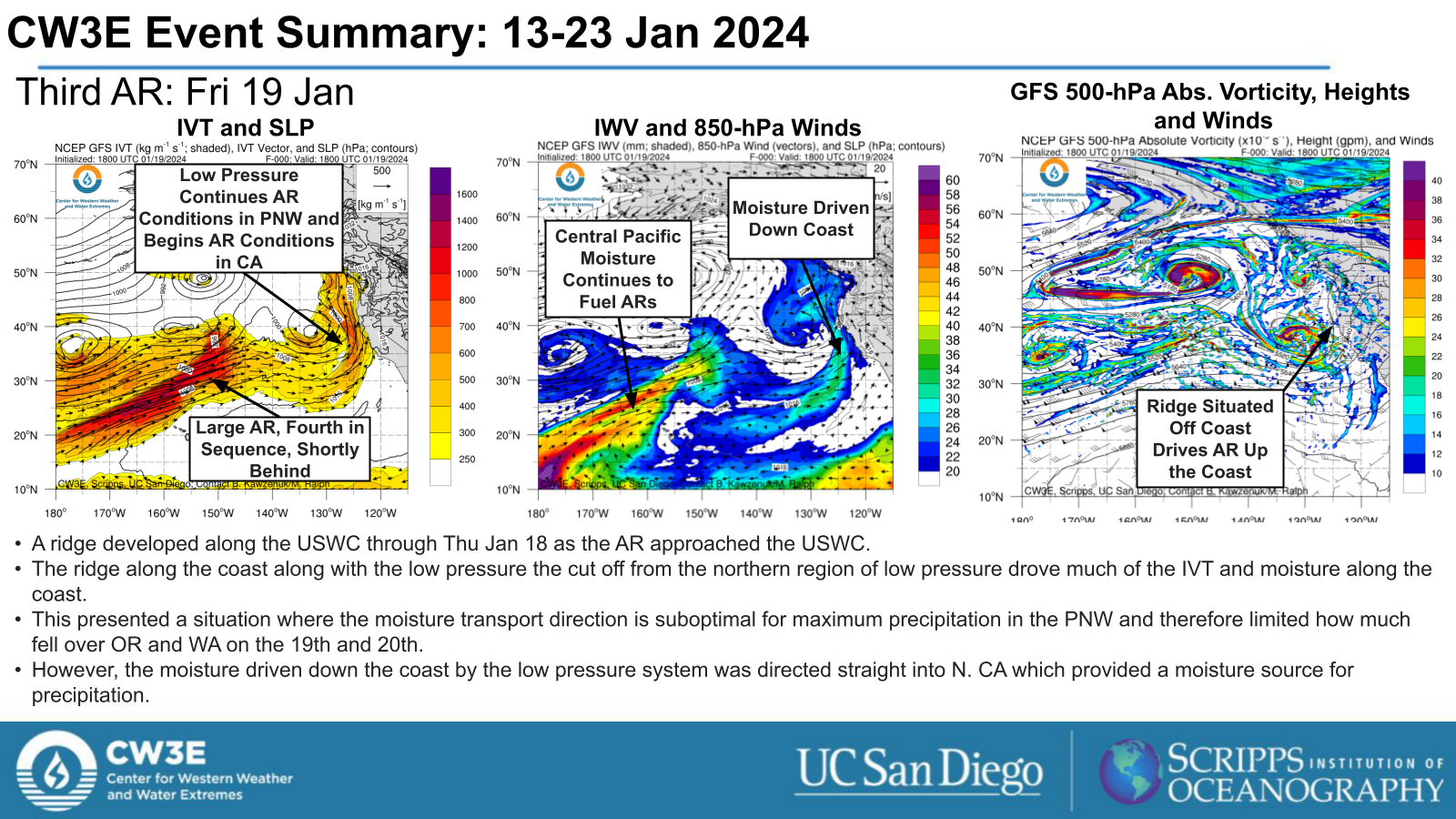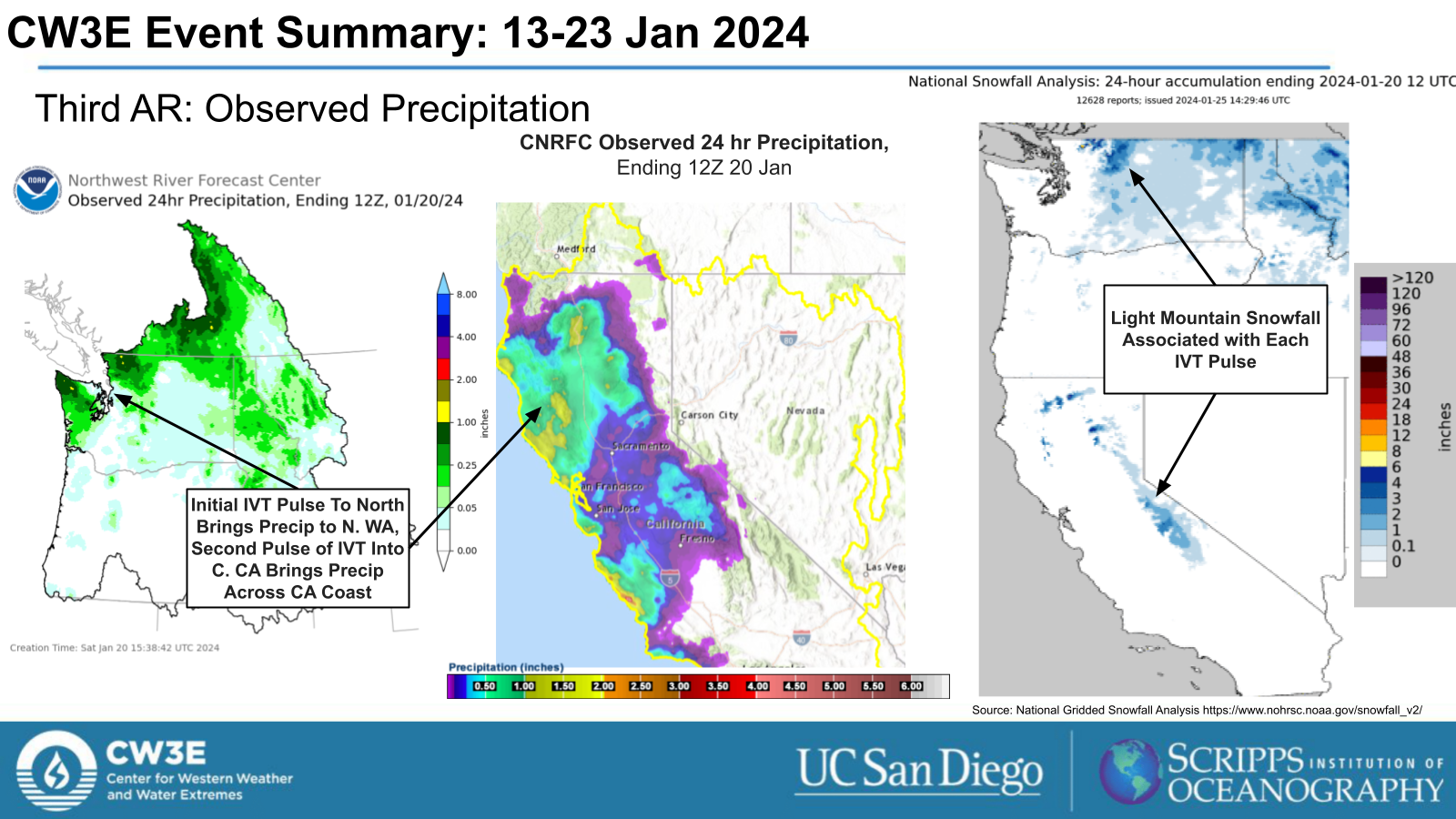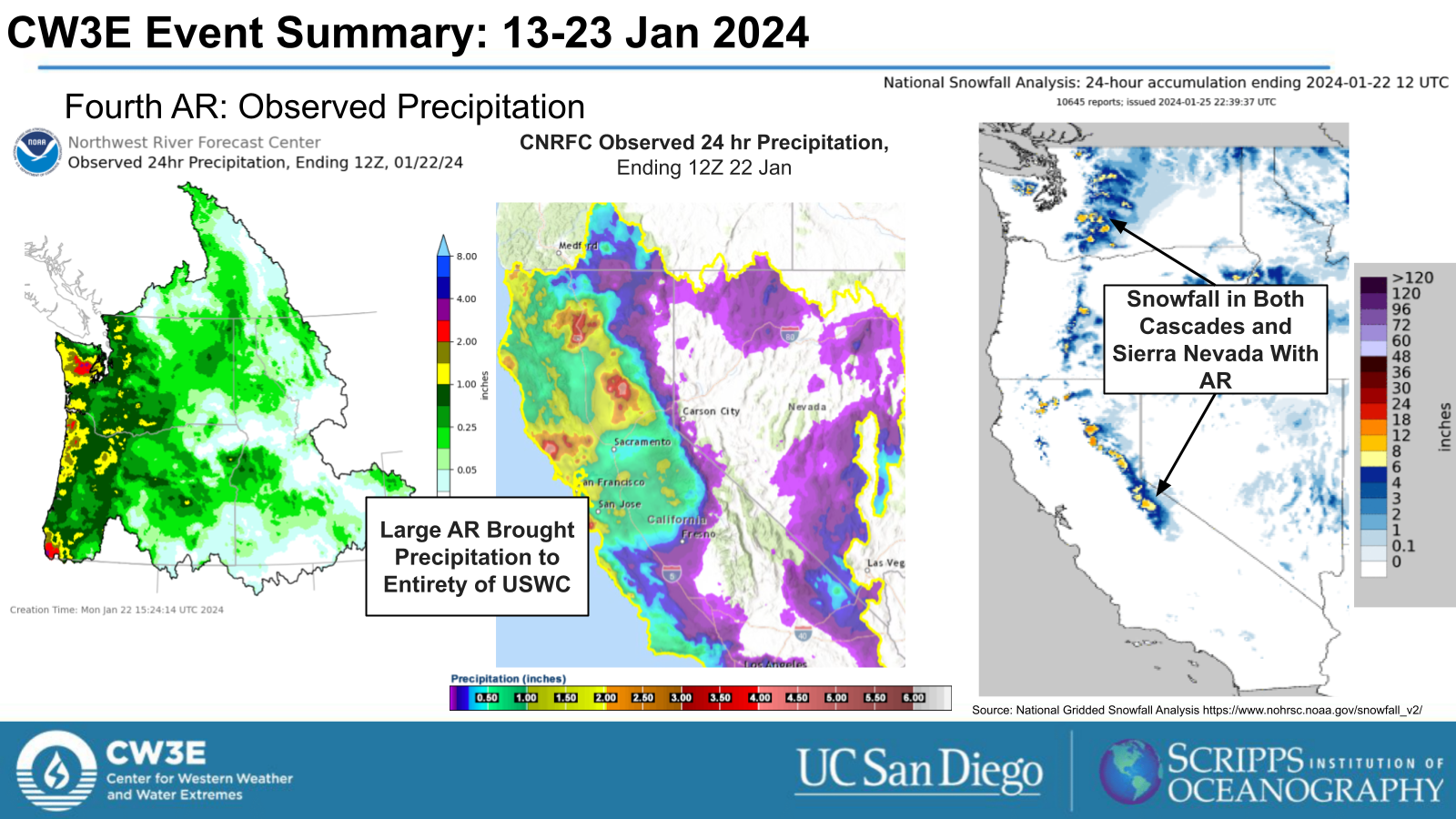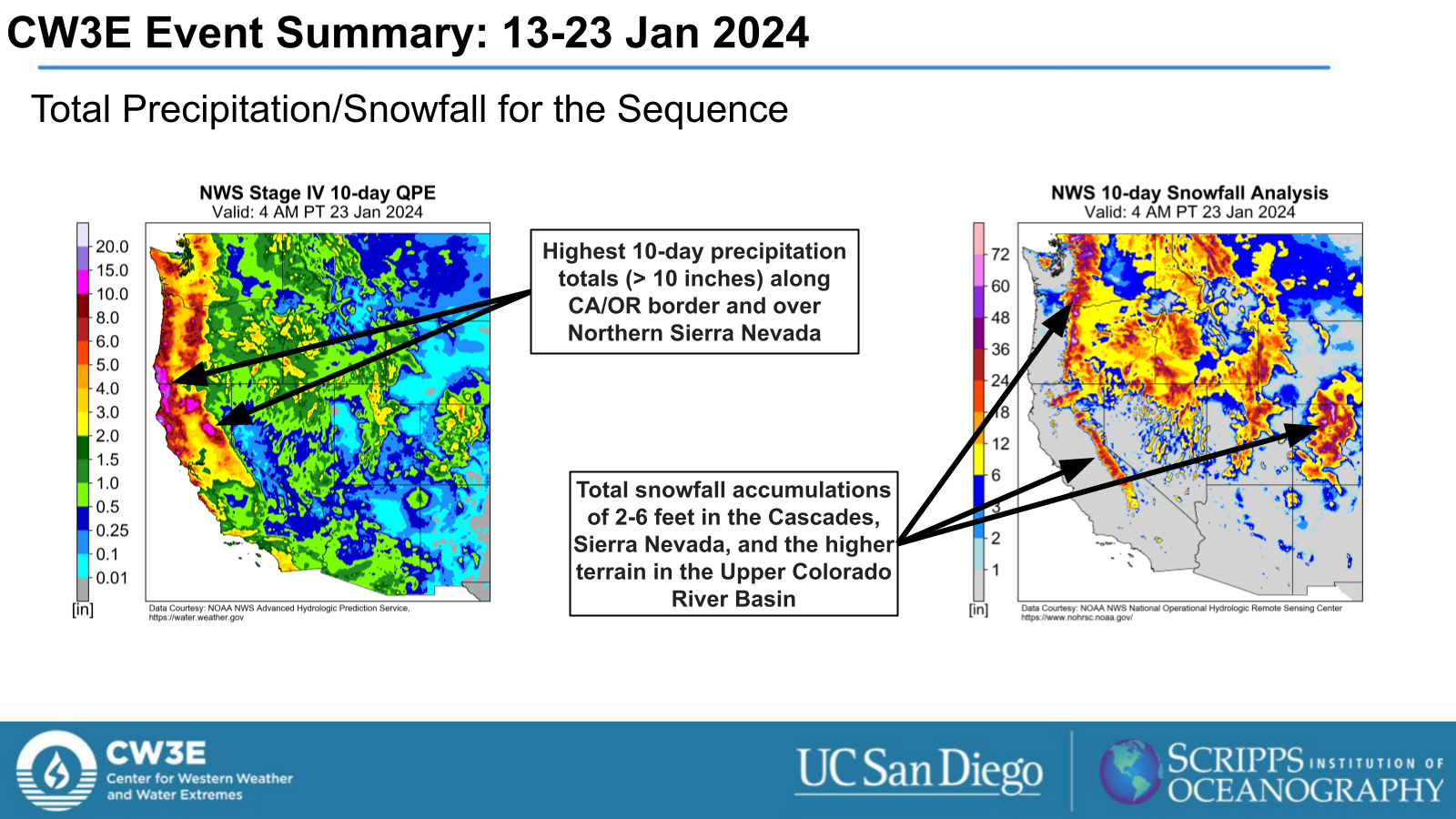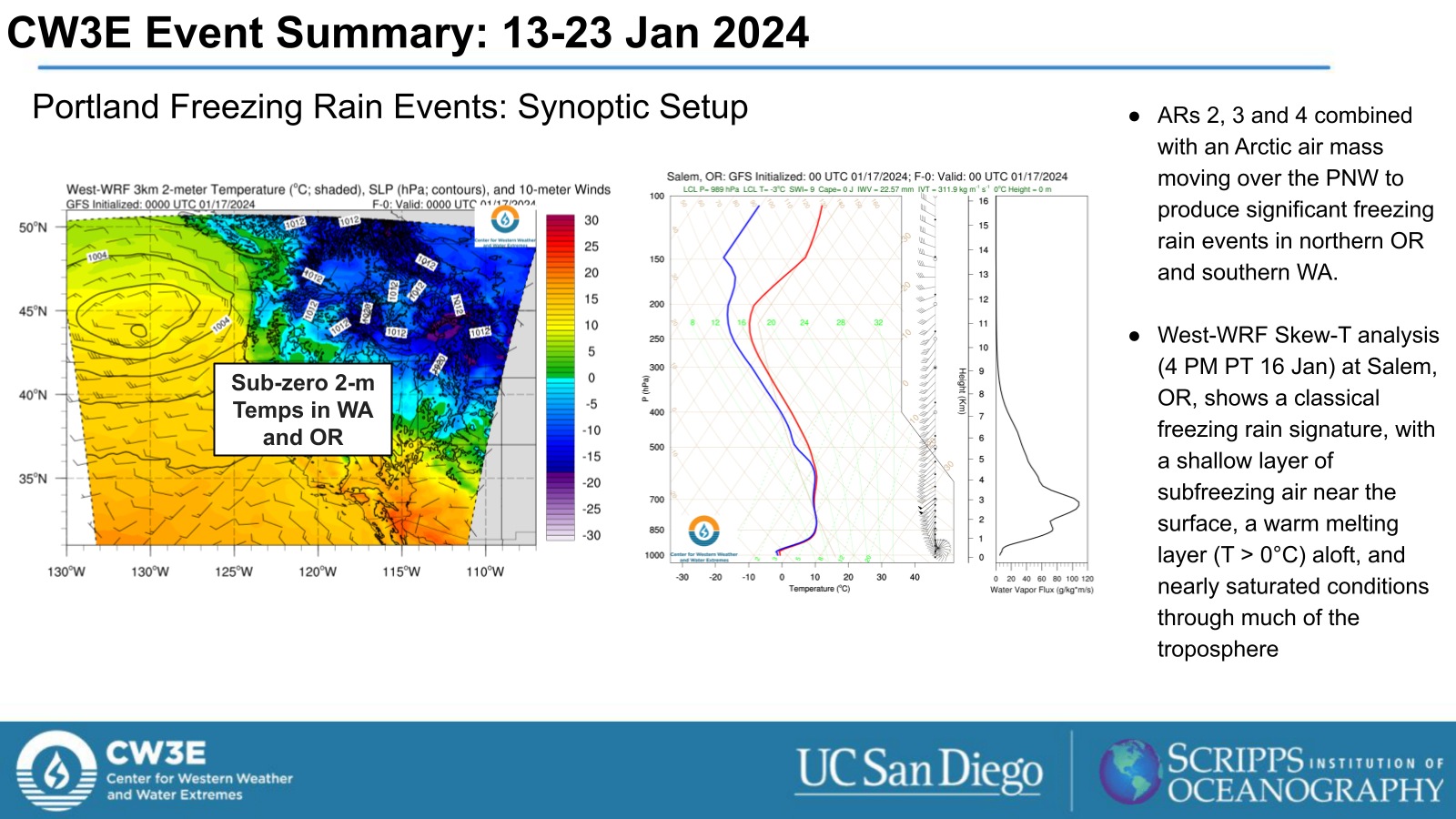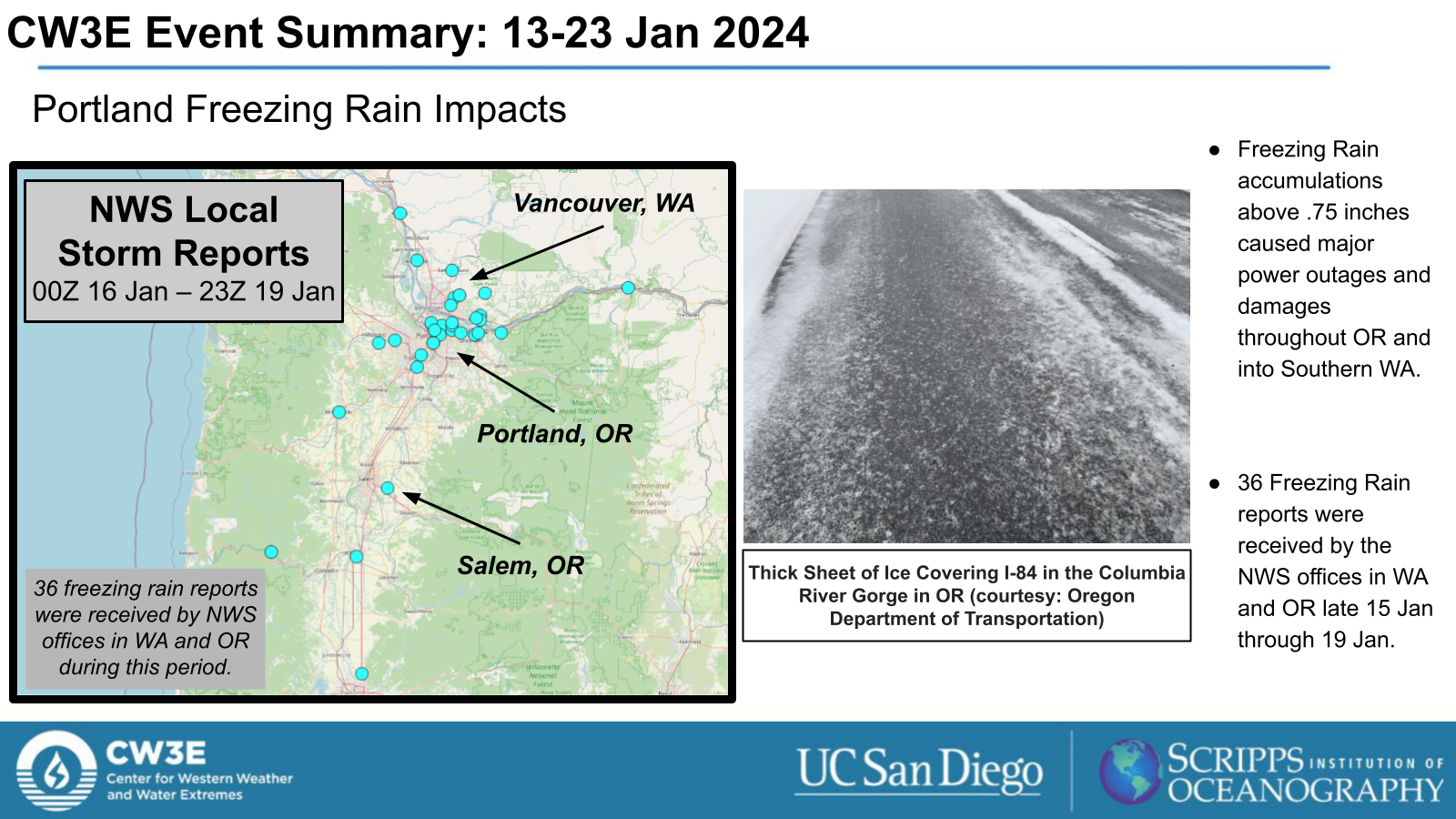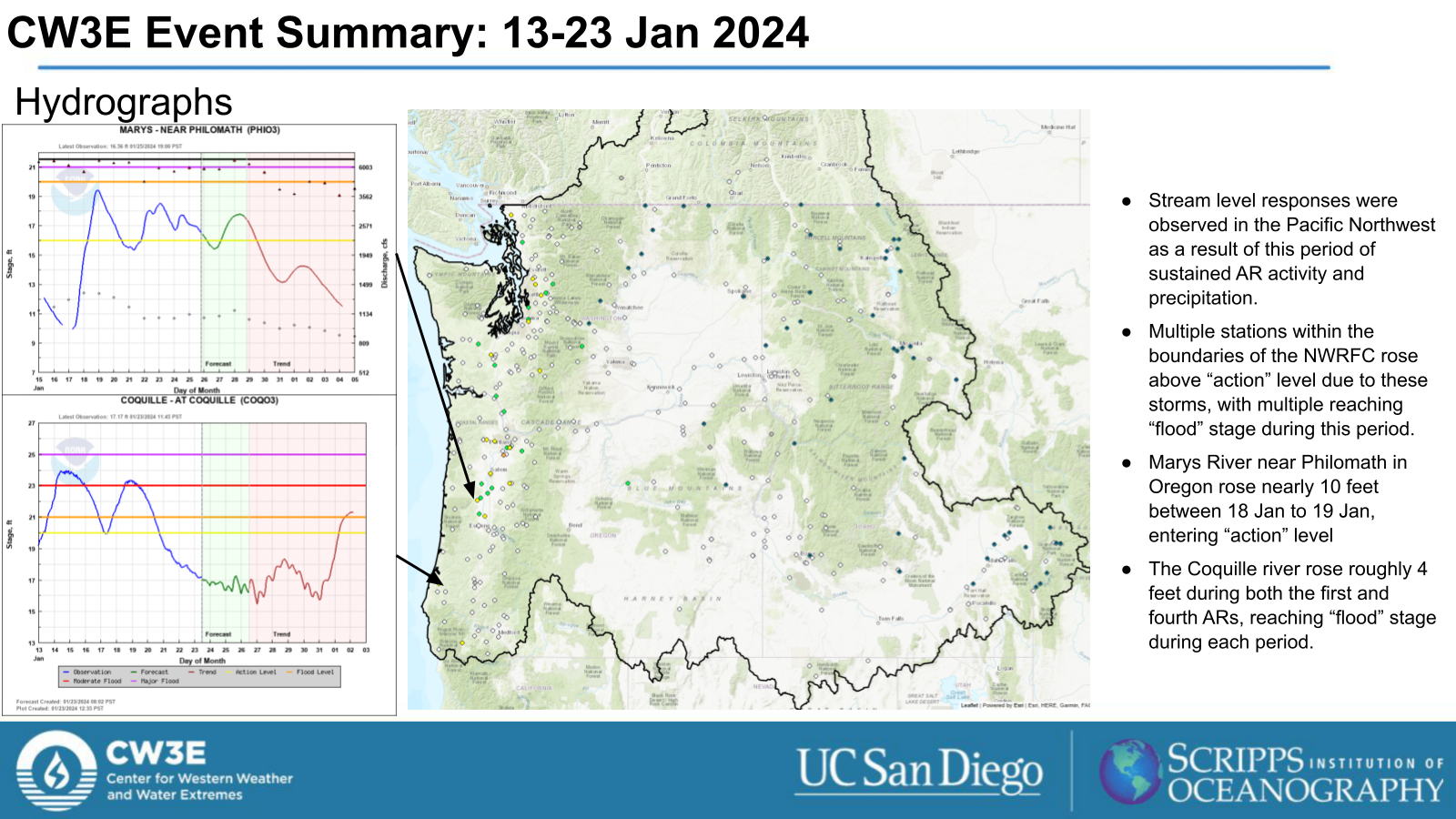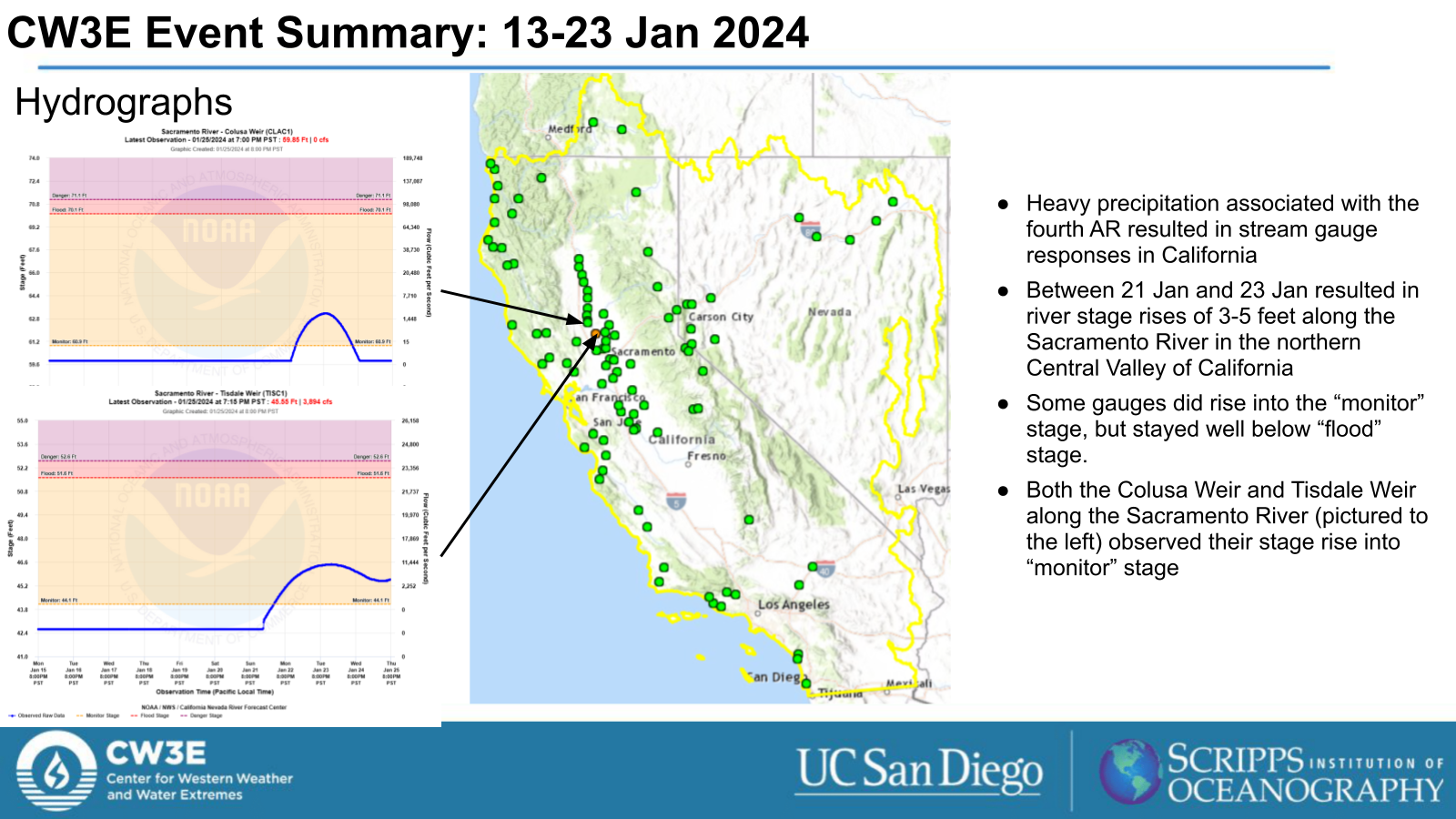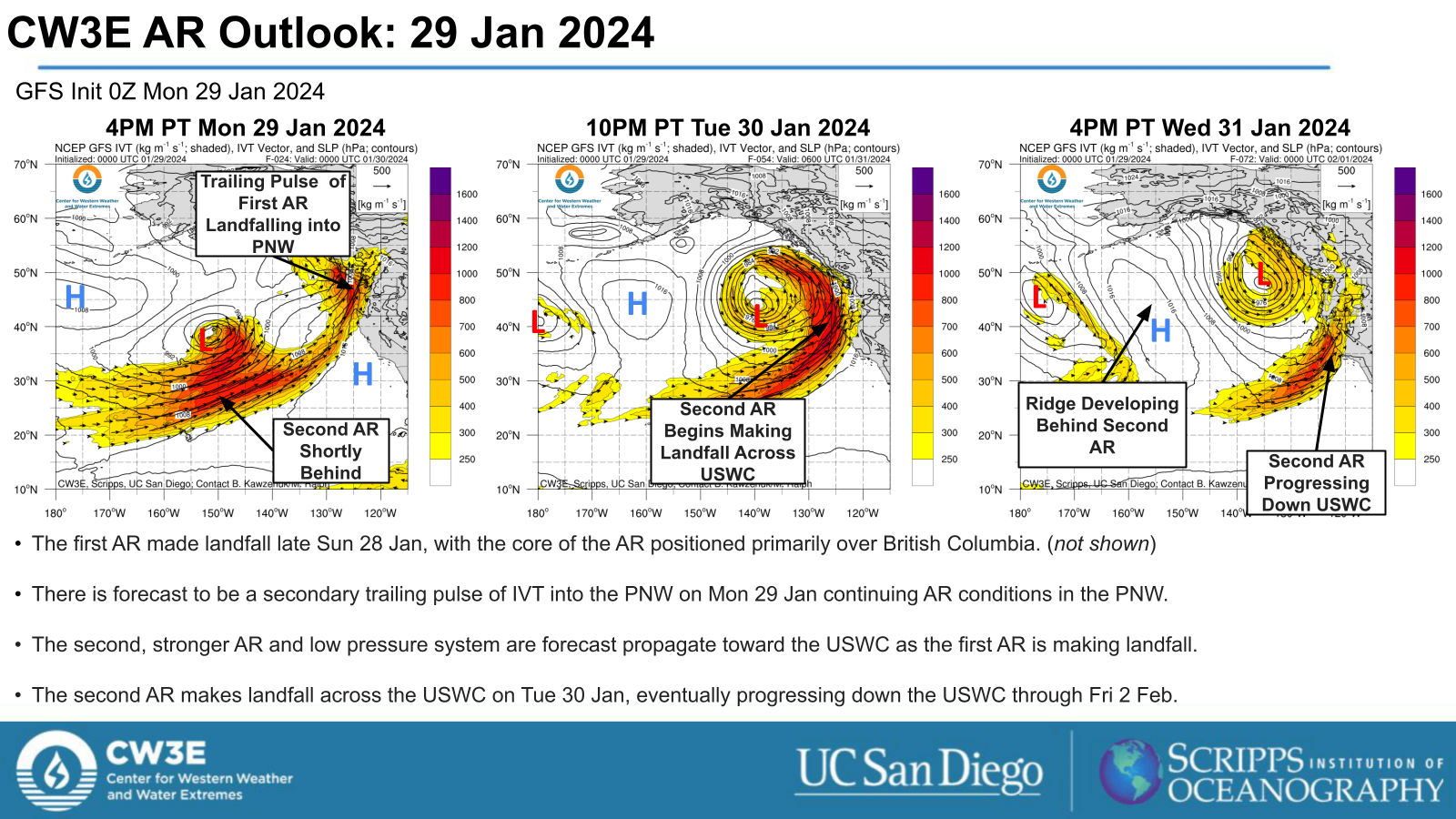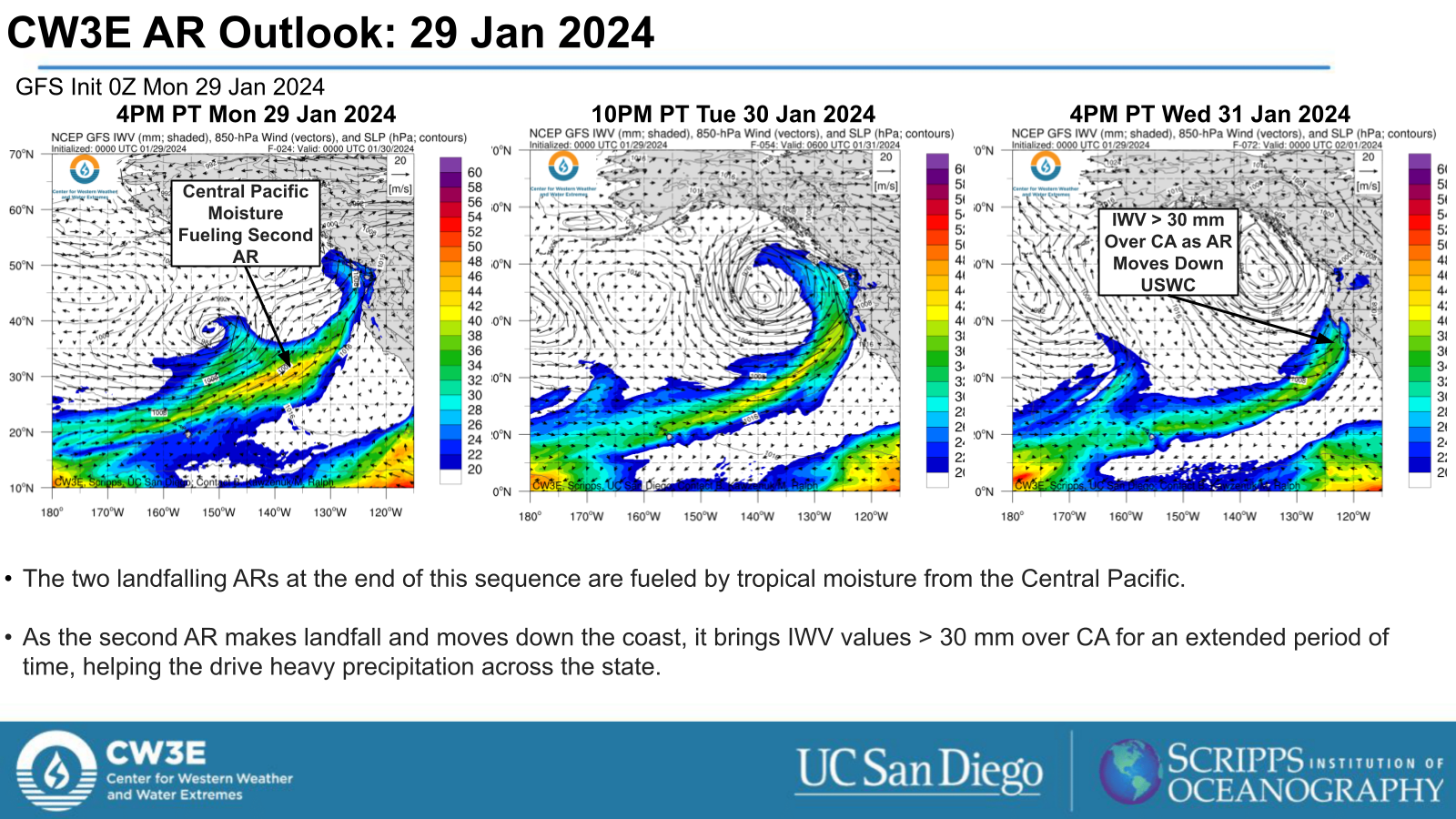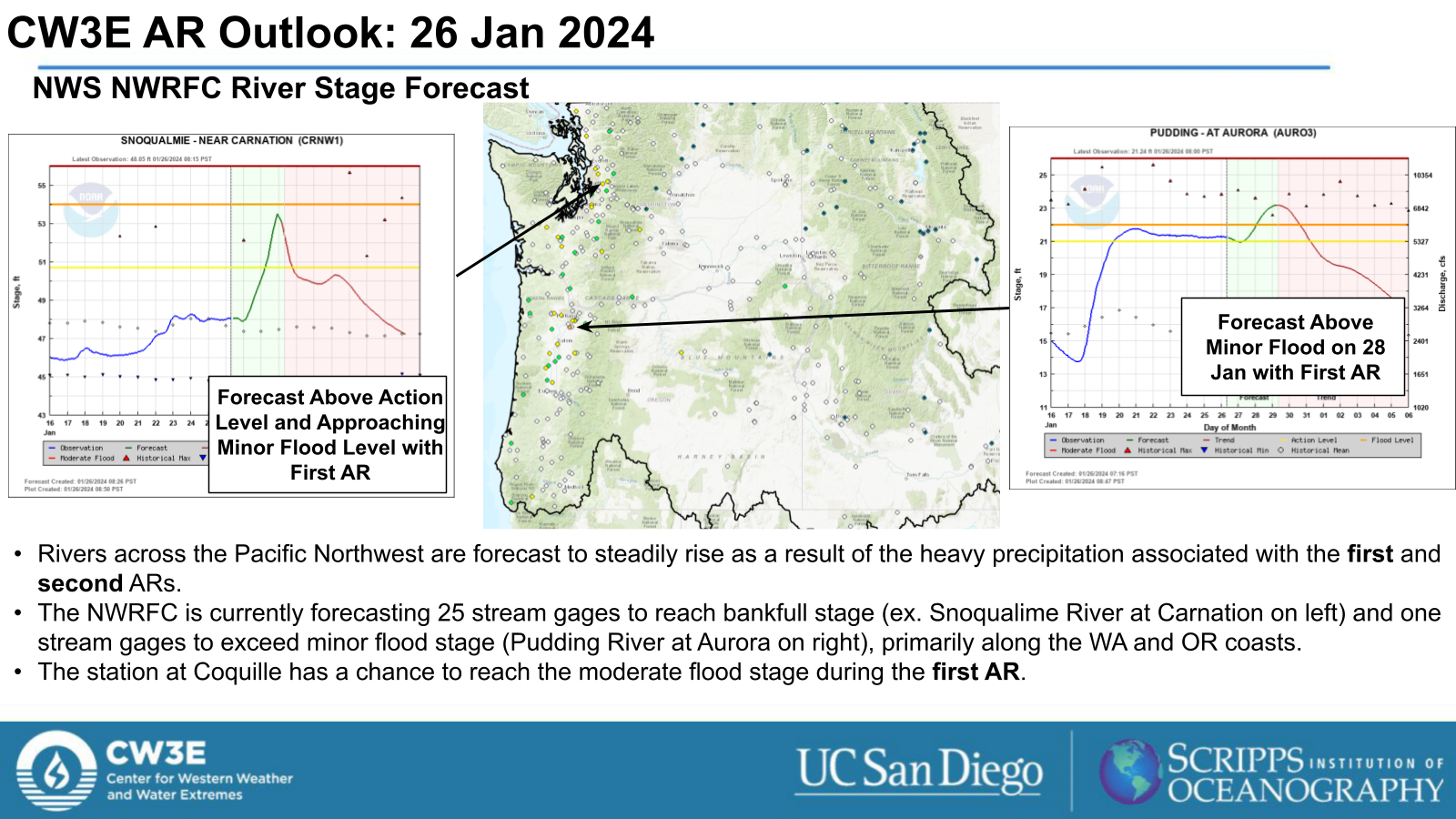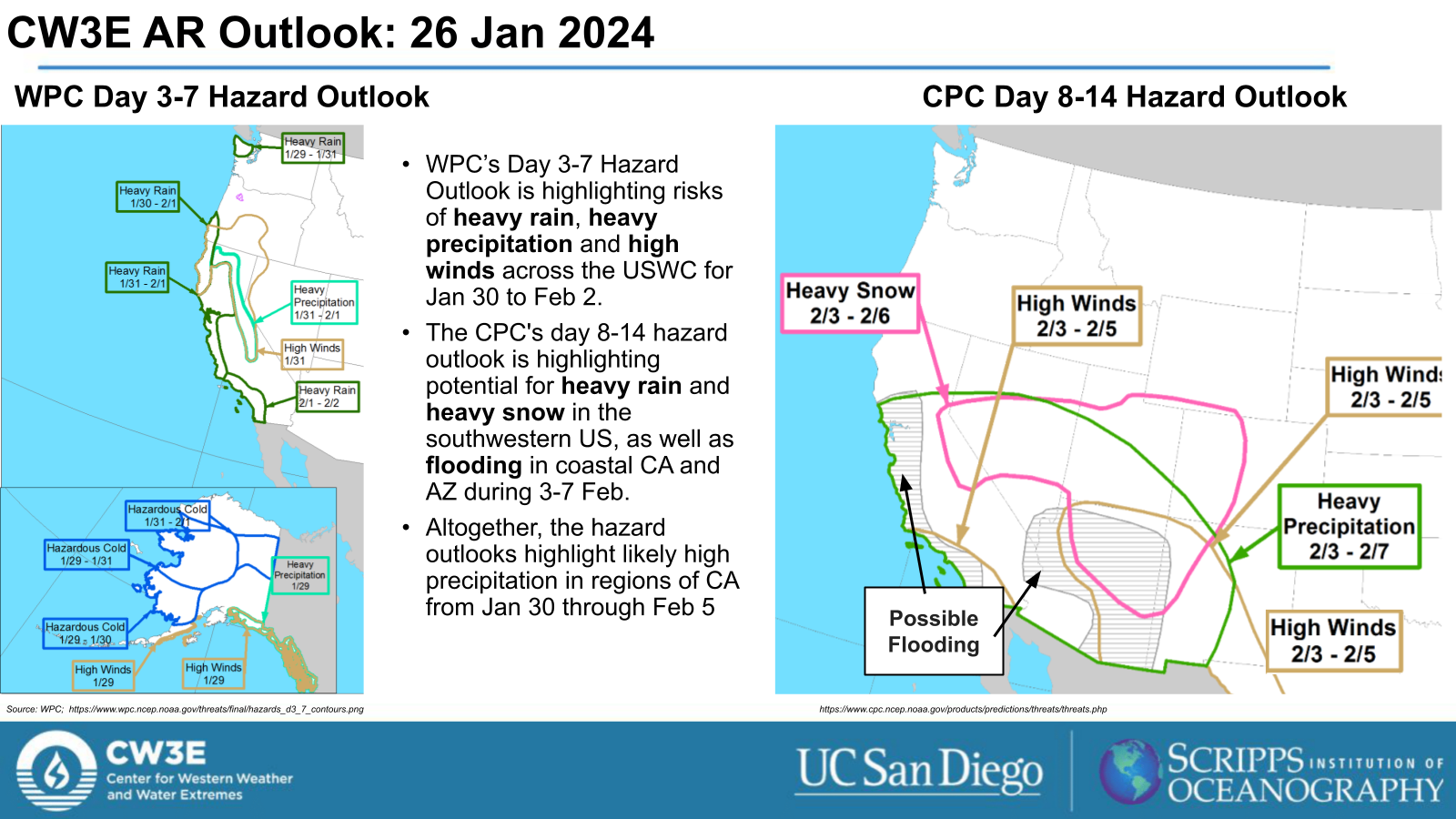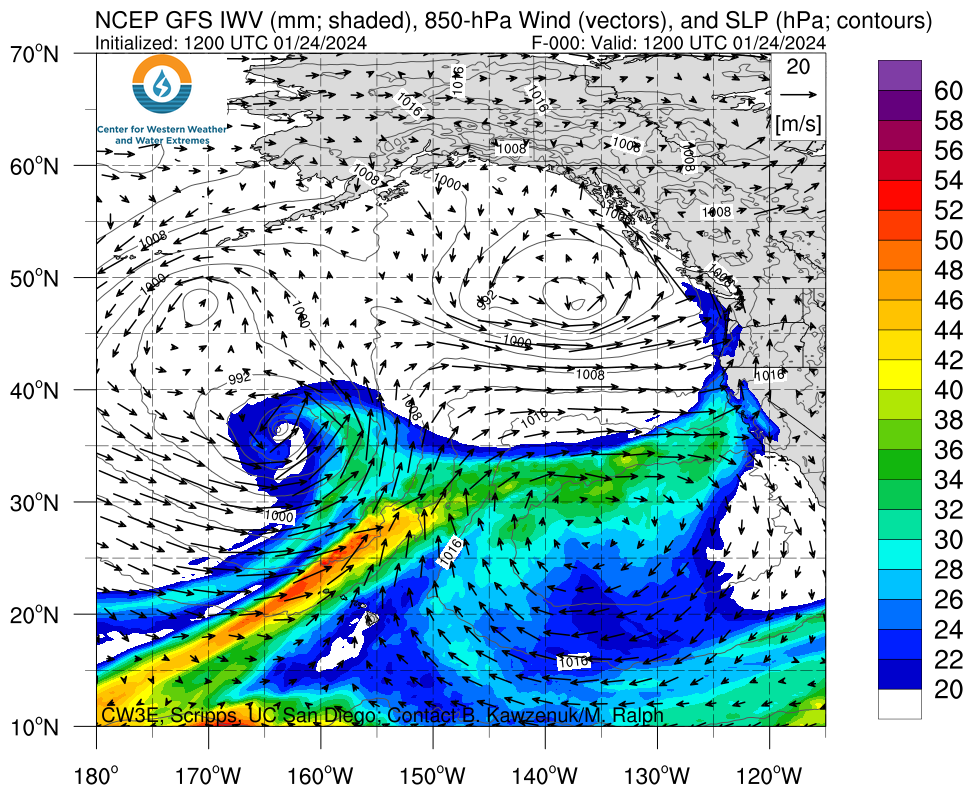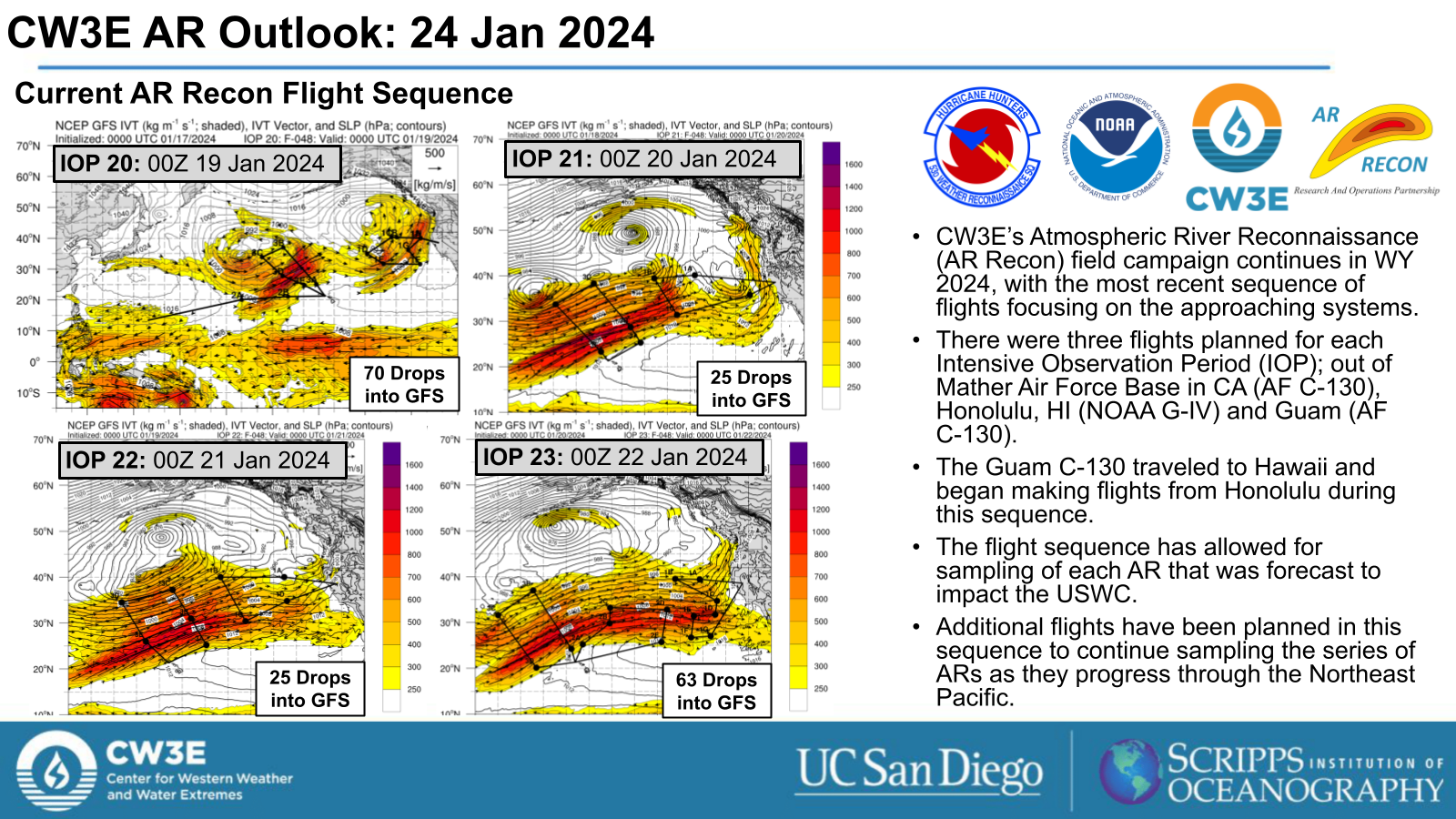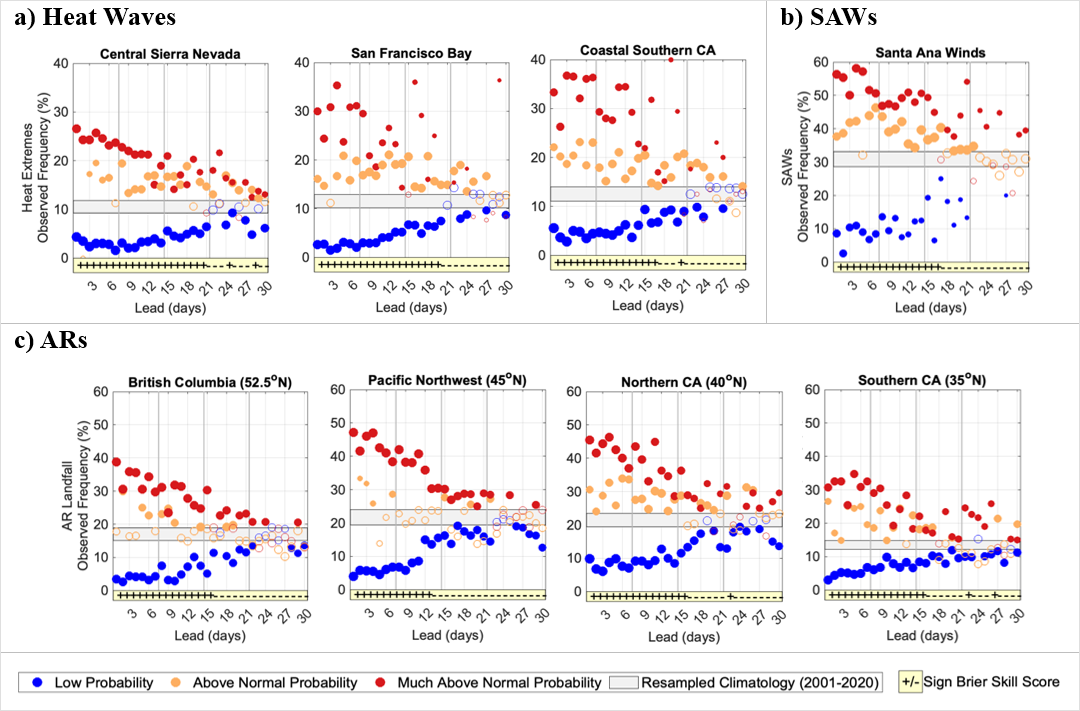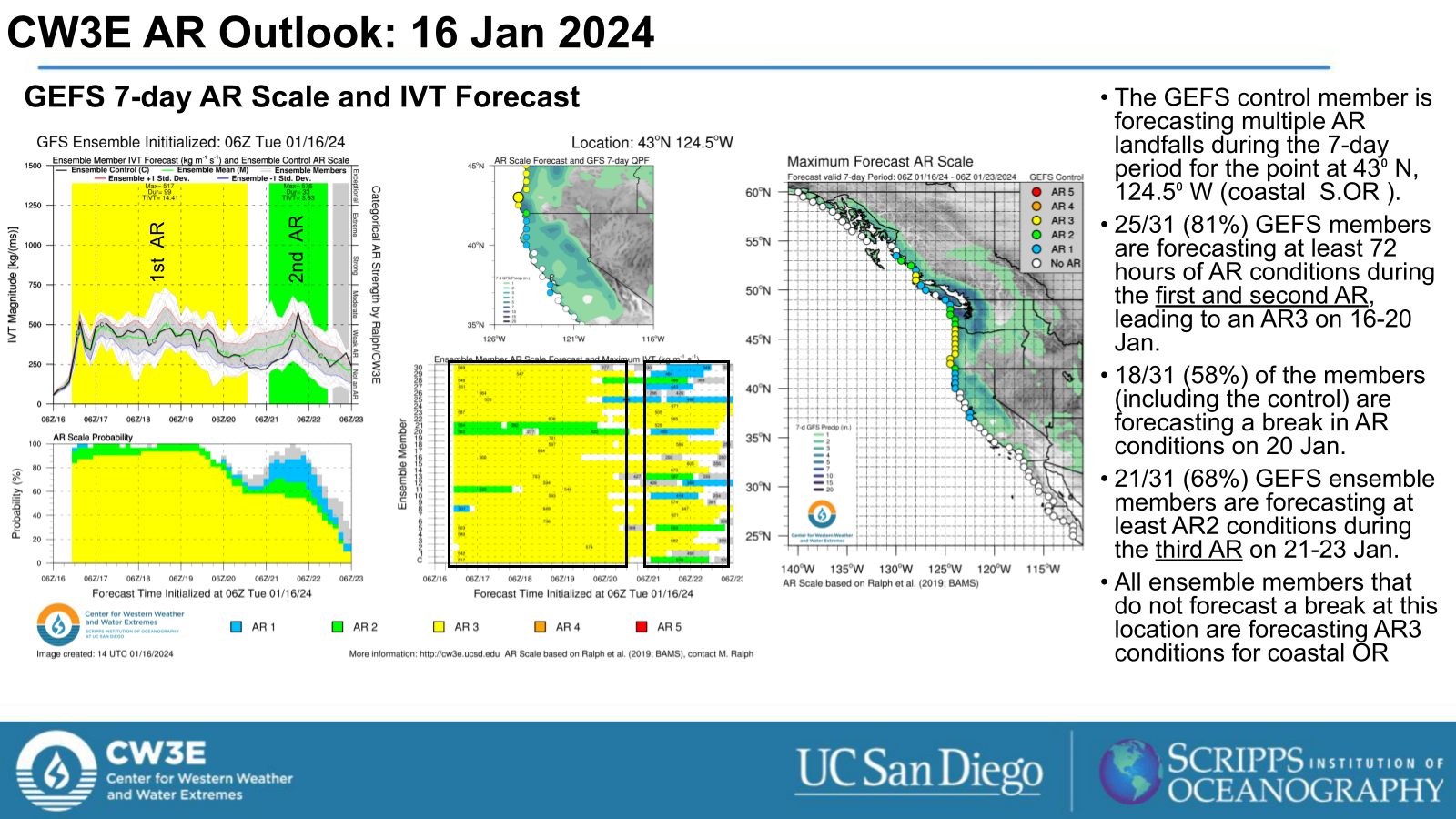CW3E Publication Notice
Subseasonal prediction of impactful California winter weather in a hybrid dynamical-statistical framework
January 23, 2024
A new paper titled “Subseasonal prediction of impactful California winter weather in a hybrid dynamical-statistical framework” was recently published in Geophysical Research Letters by Kristen Guirguis (CW3E), Alexander Gershunov (CW3E), Benjamin Hatchett (Desert Research Institute), Michael DeFlorio (CW3E), Aneesh Subramanian (University of Colorado, Boulder), Rachel Clemesha (CW3E), Luca Delle Monache (CW3E), and Marty Ralph (CW3E). This research was sponsored by the California Department of Water Resources (CA DWR) Atmospheric River Program, and contributes to the Subseasonal-to-Seasonal (S2S) Prediction of Extreme Weather Priority Area in CW3E’S 2019-2024 Strategic Plan.
The paper describes a methodology for subseasonal prediction of impactful winter weather in California, focusing on atmospheric rivers (ARs), Santa Ana winds (SAWs), and heat waves. The hybrid approach combines output from dynamical forecast models with a statistical model that relates large scale atmospheric circulation patterns to impacts in California. The approach builds on earlier work (Guirguis et al. 2018, 2020, 2022) linking atmospheric weather patterns to ARs, extreme precipitation, historic California floods, SAWs, heat extremes, and Southern California wildfires. The forecast system was evaluated over a 20-year period using ensemble hindcasts from the European Center for Medium-Range Weather Forecasts (ECMWF) model, along with several observational datasets, and was shown to have skill beyond climatology at subseasonal timescales. These results suggest its potential application in decision support for water, health, land, and fire management. We anticipate that these findings will serve as the foundation for developing real-time forecast tools, which could find applications in early warning systems to support decisions across diverse sectors. An experimental S2S forecast product based on this methodology is currently tested internally at CW3E.
Figure 1: (modified version of Figure 2 from Guirguis et al. 2023) Hindcast skill assessment of (a) heat waves in three regions, (b) SAWs in Southern California, and (c) ARs at four coastal latitudes. The y-axis shows observed event frequency following three forecast categories: low (blue), above normal (orange), and much above normal (red) probability. The sign of the Brier Skill Score (+/-) is shown along the bottom, highlighted in yellow. The gray shaded area gives the 10th-90th percentiles of the resampled distribution over the hindcast period (2001-2020). Red, orange, and blue markers are weighted by the log of the sample size (n=10 to 451), and filled markers indicate statistically significant skill (90% level using resampling).
Guirguis, K., Gershunov, A., Clemesha, R. E. S., Shulgina, T., Subramanian, A. C., & Ralph, F. M.(2018). Circulation drivers of atmospheric rivers at the North American West Coast. Geophysical Research Letters, 45, 12–576. https://doi.org/10.1029/2018GL079249
Guirguis, K., Gershunov, A., DeFlorio, M. J., Shulgina, T., Delle Monache, L., Subramanian, A. C., et al. (2020). Four atmospheric circulation regimes over the North Pacific and their relationship to California precipitation on daily to seasonal timescales. Geophysical Research Letters, 47, e2020GL087609. https://doi.org/10.1029/2020GL087609
Guirguis, K., Gershunov, A., Hatchett, B., Shulgina, T., DeFlorio, M. J., Subramanian, A. C., et al. (2022). Winter wet–dry weather patterns driving atmospheric rivers and Santa Ana winds provide evidence for increasing wildfire hazard in California. Climate Dynamics, 60(5–6), 1729–1749. https://doi.org/10.1007/s00382-022-06361-7
Guirguis, K., Gershunov, A., Hatchett, B. J., DeFlorio, M. J., Subramanian, A. C., Clemesha, R., et al. (2023). Subseasonal prediction of impactful California winter weather in a hybrid dynamical-statistical framework. Geophysical Research Letters, 50, e2023GL105360. https://doi.org/10.1029/2023GL105360
